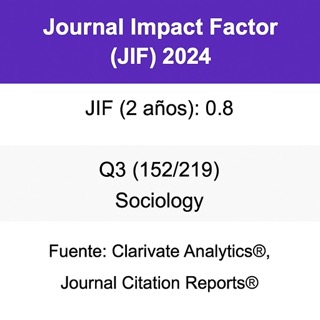De las disfunciones a los problemas sexuales en la vejez: el quebrantamiento del saber médico desde una comparativa generacional
DOI:
https://doi.org/10.22325/fes/res.2022.110Palabras clave:
sociología de la salud, sociología de la sexualidad, disfunción sexual, vejez, géneroResumen
Para las instituciones sanitarias, las disfunciones sexuales son el eje central de los programas de salud sexual de las personas mayores. Desde la Sociología se distinguen dos posicionamientos: uno basado en el modelo biomédico que las concibe como enfermedades; y en oposición a este, otro que utiliza el término “problema sexual” al posicionarse en el modelo biopsicosocial. Se indaga en la conceptualización de las disfunciones y de los problemas sexuales de la población española. Se realiza un análisis generacional y de género a través de la Encuesta Nacional de Salud Sexual (ENSS, 2009), representativa para toda la población. Los resultados indican que a lo largo del ciclo vital se experimentan malestares sexuales no siendo exclusivos de la vejez, y que es el modelo sexual reproductor, fomentado por las instituciones biomédicas, el promotor de este al restringir las prácticas al coito y constreñir la expresión del deseo y placer sexual.
Publicado
Cómo citar
Número
Sección
Licencia
Derechos de autor 2022 Aina Faus Bertomeu, Arantxa Grau i Muñoz

Esta obra está bajo una licencia internacional Creative Commons Atribución-NoComercial 4.0.
Todas las publicaciones de la Revista Española de Sociología se realizarán bajo una licencia abierta Creative Commons de Reconocimiento 4.0 Internacional (CC BY 4.0). Dicha licencia establece que los autores son los poseedores de los derechos de propiedad intelectual de sus trabajos, que pueden redistribuirse a cambio de un reconocimiento adecuado. Para más información de la licencia Creative Commons, consultar aquí.
Una vez aceptado un artículo para su publicación, la Revista Española de Sociología solicitará al denominado "autor para la correspondencia" la aceptación de una licencia obligatoria Creative Commons incluida en un acuerdo o contrato de publicación.



